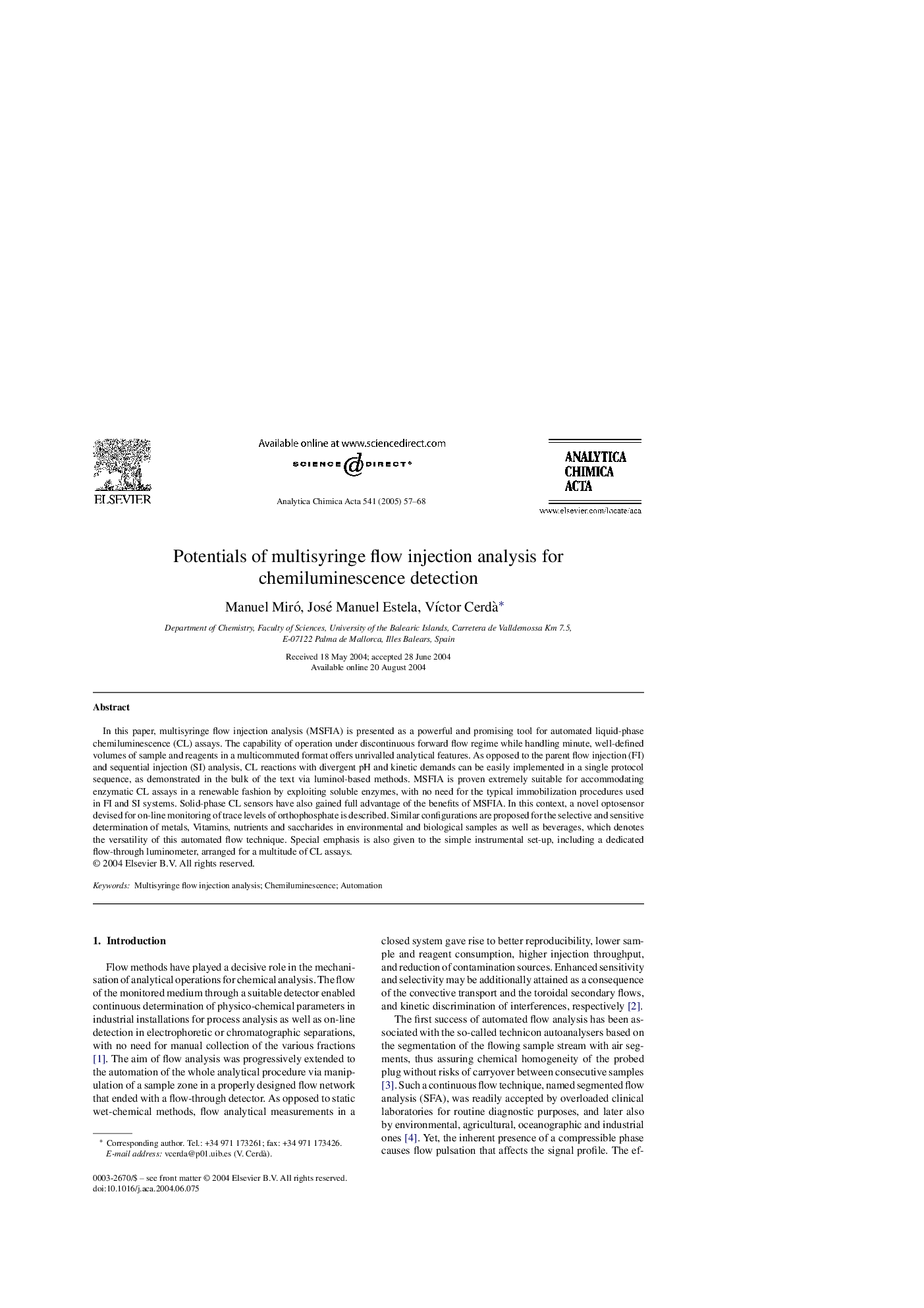| Article ID | Journal | Published Year | Pages | File Type |
|---|---|---|---|---|
| 9743605 | Analytica Chimica Acta | 2005 | 12 Pages |
Abstract
In this paper, multisyringe flow injection analysis (MSFIA) is presented as a powerful and promising tool for automated liquid-phase chemiluminescence (CL) assays. The capability of operation under discontinuous forward flow regime while handling minute, well-defined volumes of sample and reagents in a multicommuted format offers unrivalled analytical features. As opposed to the parent flow injection (FI) and sequential injection (SI) analysis, CL reactions with divergent pH and kinetic demands can be easily implemented in a single protocol sequence, as demonstrated in the bulk of the text via luminol-based methods. MSFIA is proven extremely suitable for accommodating enzymatic CL assays in a renewable fashion by exploiting soluble enzymes, with no need for the typical immobilization procedures used in FI and SI systems. Solid-phase CL sensors have also gained full advantage of the benefits of MSFIA. In this context, a novel optosensor devised for on-line monitoring of trace levels of orthophosphate is described. Similar configurations are proposed for the selective and sensitive determination of metals, Vitamins, nutrients and saccharides in environmental and biological samples as well as beverages, which denotes the versatility of this automated flow technique. Special emphasis is also given to the simple instrumental set-up, including a dedicated flow-through luminometer, arranged for a multitude of CL assays.
Related Topics
Physical Sciences and Engineering
Chemistry
Analytical Chemistry
Authors
Manuel Miró, José Manuel Estela, VÃctor Cerdà ,
